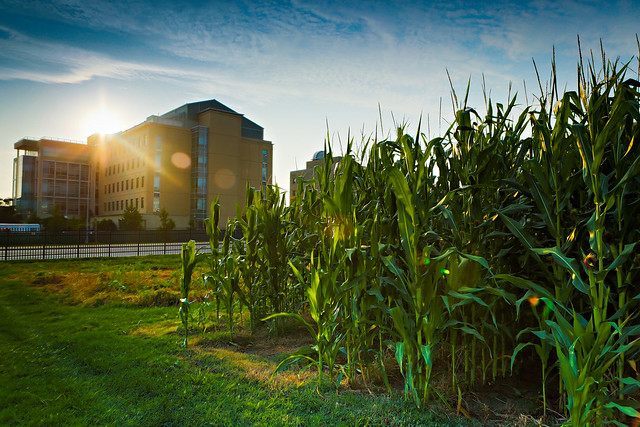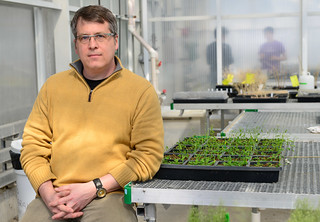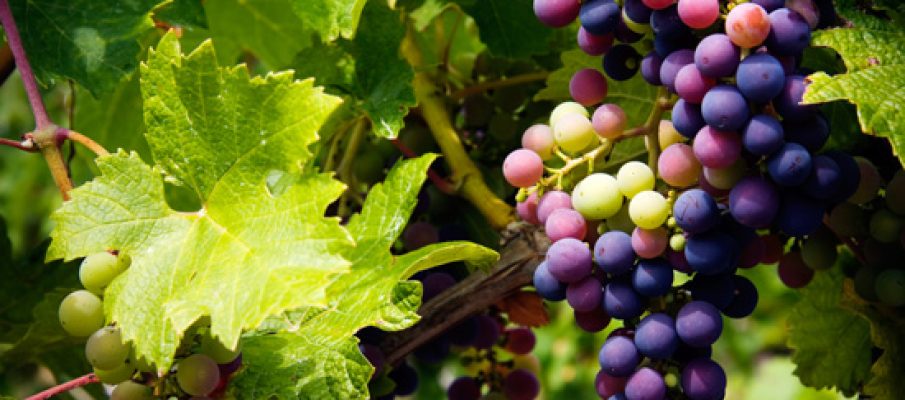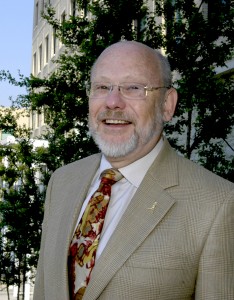Professor Lloyd W. Sumner introduces University of Missouri Metabolomics Center. The new center provides leading-edge equipment to gain crucial information on the complex biology of health and disease in plants, animals and humans. The center, located on the second floor of the Christopher S. Bond Life Sciences Center on the MU campus, is one of a few in the country that encourages interdisciplinary research in metabolomics.
Bobby Remis
Posts by Bobby Remis:
MU Scientists Fighting World Hunger
By Bobby Remis | MU Bond Life Sciences Center

In the years to come, climate change and population growth will drastically alter the world around us, impacting farmland and the way we grow food.

New research from an interdisciplinary team at the University of Missouri is hoping to curb the decrease in food production due to climate change by studying the roots of corn and understanding its growth in these intense conditions.
Scott C. Peck — an investigator at the Bond Life Sciences Center — joins an interdisciplinary team that plans to study corn root growth in
drought conditions. The National Science Foundation (NSF) recently awarded them a $4.2 million grant to spend four years developing drought-tolerant corn varieties in an effort to sustain the 9 billion people estimated worldwide by 2050.
The interdisciplinary team is comprised of seven co-primary investigators from four MU colleges as well as the USDA-ARS.
Read the full release from Mizzou News.
Bond Life Sciences Center Scientists Named to Thomson Reuters’ 2015 List of Highly Cited Researchers
By Bobby Remis | MU Bond Life Sciences Center
You can imagine it’s hard to distinguish yourself from the crowd when it comes to scientific papers.
But, publishing quality work in a well-known journal adds value to the whole scientific world by assisting others and inspiring new science. Three Bond LSC researchers recently were recognized for doing just that.
Bond Life Sciences Center scientists Chris Pires, Shuqun Zhang and Yidong Liu are among five University of Missouri System researchers named in the 2015 Thomson Reuters’ Highly Cited Researchers list.
This list spotlights the top 1 percent of papers published from nearly 9 million scientists and scholars. The Highly Cited Researchers 2015 list represents the world’s most influential scientific minds from 21 scientific fields. The rankings are based on how often scientific papers published in the last decade get cited in newly published research, according to Essential Science Indicators (ESI), a component of the Web of Science.
 Chris Pires, associate professor of Biological Sciences, studies the evolution of plants by looking at changes in their genetics over millions of years. Pires published work in 2015 looking at how plant defenses evolved in tandem with the defenses of caterpillars that feed on them.
Chris Pires, associate professor of Biological Sciences, studies the evolution of plants by looking at changes in their genetics over millions of years. Pires published work in 2015 looking at how plant defenses evolved in tandem with the defenses of caterpillars that feed on them.
Shuqun Zhang is a Distinguished Researcher from the MU College of Agriculture, Food and  Natural Resources and a professor of Biochemistry. His research seeks to improve plants’ response to adverse environmental conditions. By identifying molecular targets that aid in protecting crops from disease, his research aims to help create healthier, more productive agricultural products. In particular, he focuses on a family of enzymes called mitogen-activated protein kinases (MAPKs) that are involved in plant cell-to-cell communication and plant interaction with its environment.
Natural Resources and a professor of Biochemistry. His research seeks to improve plants’ response to adverse environmental conditions. By identifying molecular targets that aid in protecting crops from disease, his research aims to help create healthier, more productive agricultural products. In particular, he focuses on a family of enzymes called mitogen-activated protein kinases (MAPKs) that are involved in plant cell-to-cell communication and plant interaction with its environment.
 Yidong Liu is a senior research specialist from MU’s Department of Biochemistry that manages Shuqun Zhang’s lab. She also works on MAPKs and their role in plant defense responses such as pathogen-induced ethylene biosynthesis and phytoalexin induction.
Yidong Liu is a senior research specialist from MU’s Department of Biochemistry that manages Shuqun Zhang’s lab. She also works on MAPKs and their role in plant defense responses such as pathogen-induced ethylene biosynthesis and phytoalexin induction.
The Bond Life Sciences Center is an interdisciplinary research center at the University of Missouri exploring problems in human and animal health, the environment and agriculture since 2004. Learn more about our research by visiting bondlsc.missouri.edu.
MU researchers tackle tough grapevine pest

Division of Plant Sciences and Bond LSC investigators Jack Schultz and Heidi Appel have been awarded a grant by the National Science Foundation to unravel the mystery of how an insect pest gets the better of the world’s – and Missouri’s – most valuable fruit crop. Grape phylloxera is an insect that infests grapevine leaves and roots, reducing the plant’s production and cutting off its water supply. The insect somehow convinces the plant to construct a complex home and feeding site around itself, called a gall. Many kinds of insects can cause plants to create galls, but no one knows how they do it. Clues suggest that the insect uses chemical signals to alter the activity of genes needed to develop these unique organs. The Schultz/Appel team, helped by collaborators at the University of Florida, will identify grapevine genes the insect manipulates to form a gall. Not only will this solve a long-standing mystery about the galling process, but it will also offer the grape/wine industry a means of identifying resistant vines. Missouri saved the world’s wine industry once before, by exporting phylloxera-resistant vines. This research project offers a second opportunity to defeat this scourge of the vineyard.
Welcome

Welcome to Decoding Science, a new science blog from the Christopher S. Bond Life Sciences Center at the University of Missouri! The Bond Center is a highly interdisciplinary research organization that promotes collaboration to address questions where different disciplines and study systems meet. Our approaches range far and wide through the life sciences and beyond. So we have lots of stories of our own and we follow interesting science tales everywhere we find them.
So, why “Decoding Science”? Well, we realize that scientists speak their own language, loaded with strange jargon and complicated logic. That can make them hard to understand. We really want to change that, so that anyone can enjoy the exciting science stories we find. We’ll be decoding the strange words and concepts so we can share them with all.
Stay with us and you’ll wind up as excited as we are about what’s happening in science and our world, and you’ll pick up stories and factoids you may even want to retell. So – let’s get started!

